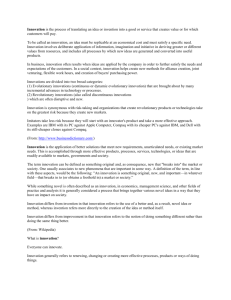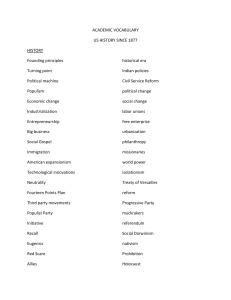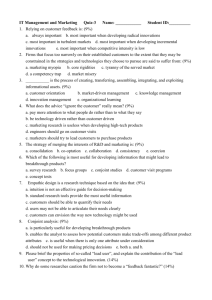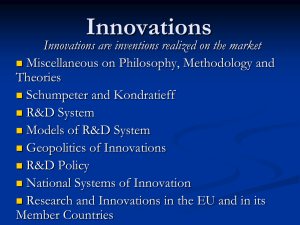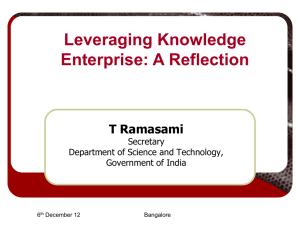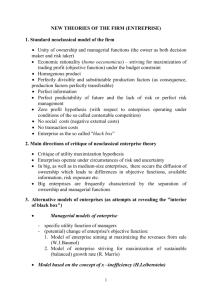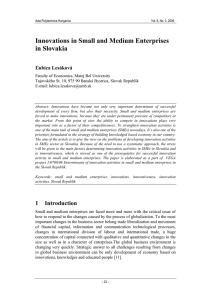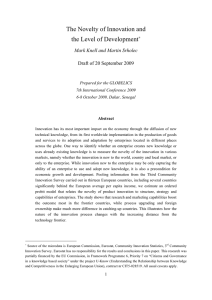new currents in the theory of market and competition
advertisement
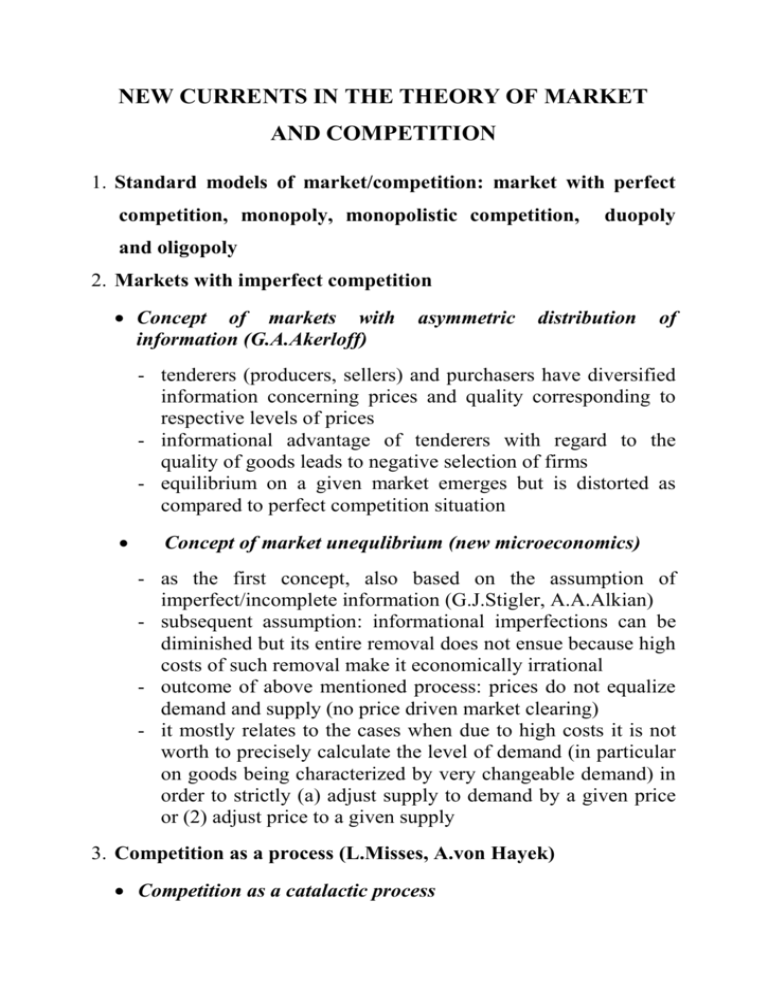
NEW CURRENTS IN THE THEORY OF MARKET AND COMPETITION 1. Standard models of market/competition: market with perfect competition, monopoly, monopolistic competition, duopoly and oligopoly 2. Markets with imperfect competition Concept of markets with information (G.A.Akerloff) asymmetric distribution of - tenderers (producers, sellers) and purchasers have diversified information concerning prices and quality corresponding to respective levels of prices - informational advantage of tenderers with regard to the quality of goods leads to negative selection of firms - equilibrium on a given market emerges but is distorted as compared to perfect competition situation Concept of market unequlibrium (new microeconomics) - as the first concept, also based on the assumption of imperfect/incomplete information (G.J.Stigler, A.A.Alkian) - subsequent assumption: informational imperfections can be diminished but its entire removal does not ensue because high costs of such removal make it economically irrational - outcome of above mentioned process: prices do not equalize demand and supply (no price driven market clearing) - it mostly relates to the cases when due to high costs it is not worth to precisely calculate the level of demand (in particular on goods being characterized by very changeable demand) in order to strictly (a) adjust supply to demand by a given price or (2) adjust price to a given supply 3. Competition as a process (L.Misses, A.von Hayek) Competition as a catalactic process - Competition means not the state of the market but a continuous process of rivalry - Competition refers to the access to scarce resources or to the exploration of new resources and/or new manners of their use - competition as a process consists in acquiring information and attaining private benefits owing to it - competition has a spontaneous character but proceeds according to commonly accepted rules - a special case here is the concept of J.A. Schumpeter: competition as the process creative destruction Competition as an evolutionary process (evolutionary economics, evolutionary model of enterprise: R.R.Nelson and S.G.Winter, A.A.Alchian/M.Friedman) - generally: reference to the evolution theory, both of Darwin and based on modern genetics - competition as a process of natural selection of firms and their adaptation to changing conditions of the business environment; adaptation takes place through innovations and imitation of other enterprises' activities - the notion of routine as counterpart of genotype in the biological evolution - development of enterprises means looking for a new routine; it ensues through innovations, imitation, takeovers (of enterprises or their parts), personal mobility. New routine may be interpreted as the change of genotype in biology or the mutation - mutation consists mostly not in finding optimal but only satisfycing (H. Simon' theory satisfycing behavior) solutions - new routines are usually not distant from old routines (Nelsone/Winter) because search for them is typically based on standard knowledge and experience of enterprises 4. Theory of contestable competition (W.J.Baumol and others) Potentially competitive market has a number of features of perfectly competitive market - lack of entry and exit barriers - lack of costs of entry and exit (sunk costs = 0) - date of entry is meaningless from the point of view of competitive position - lack of entry/exit barriers and following conclusion that sunk costs = 0 means the existence of permanent competitive pressure both for enterprises operating under conditions of monopolistic competition and (even) having a full monopoly position - potential competition leads (theoretically) to the same results as perfect competition - equilibrium is effective even for the case that there is a small number of tenderers or the goods being offered are not homogenous 5. Theory of innovation and competition of J.A. Schumpeter generally: a kind of evolutionary theory general foundation for the competition are innovations and structural changes in the economy point of departure: distinction between economic statics and dynamics dynamics stage (evolution, development): central category for this stage is the entrepreneur and innovations (very broad understanding of innovations)) triad: inventions → innovations → imitation ( diffusion of innovations) innovation as the source of entrepreneurial profit development as a process of creative destruction innovation and the spirit of entrepreneurship in the light of business concentration process and "managerial revolution"
